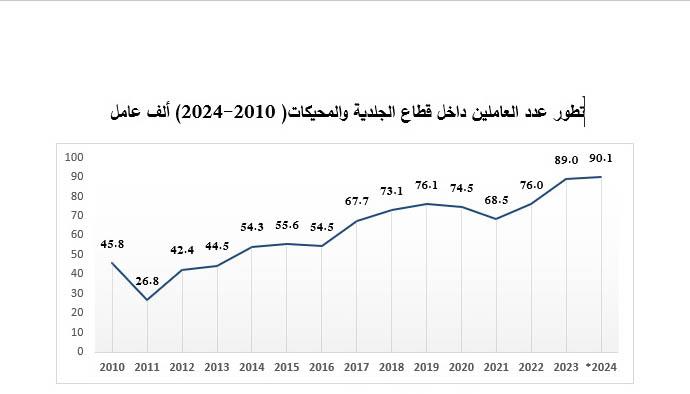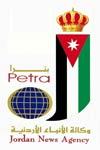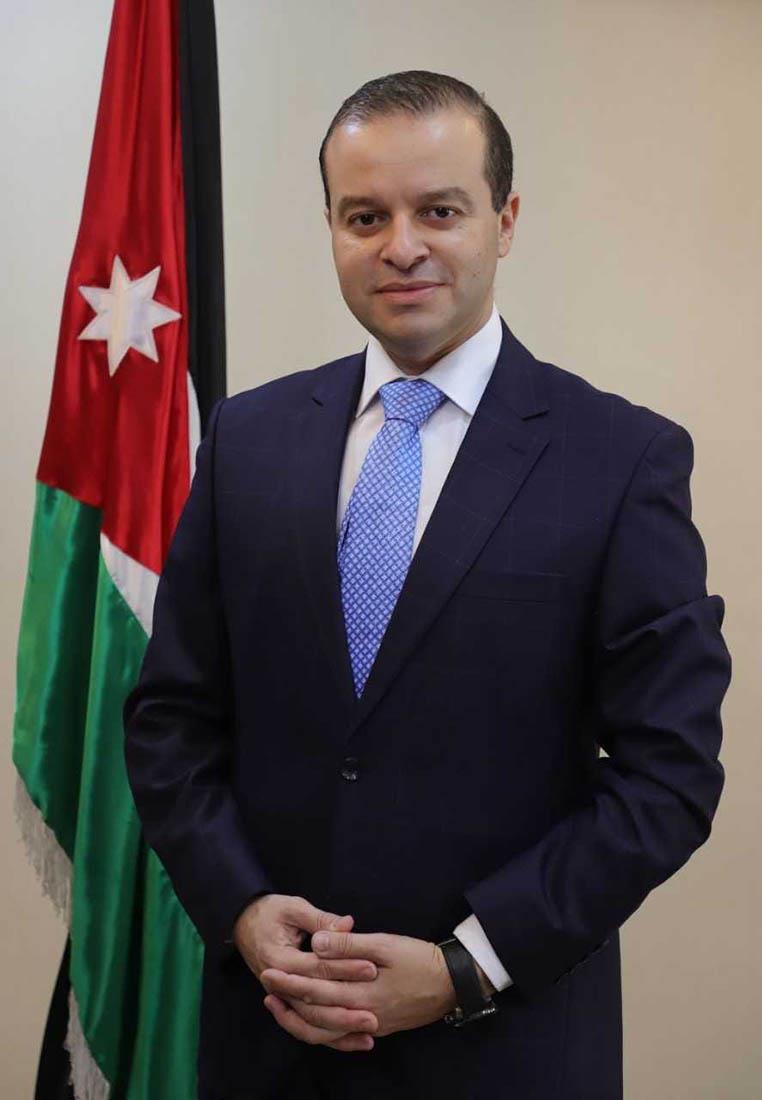
403
Sorry!!
Error! We're sorry, but the page you were looking for doesn't exist.
Jordan's Leather And Textile Industry Emerges As Key Economic Driver With $2 Billion Output
(MENAFN- Jordan News Agency)
Amman, Jan 11 (Petra) --In a significant testament to Jordan's industrial evolution, the leather and textile manufacturing sector has emerged as a pivotal contributor to the kingdom's economic landscape, commanding a substantial 2 percent share of the gross domestic product (GDP).
The sector, which inaugurated Jordan's industrial journey in 1920, has undergone remarkable transformation, witnessing an exponential surge in production value from JD 140 million at the turn of the millennium to an impressive JD 2 billion in current market valuation.
The sector's robust economic performance metrics underscore its strategic importance in the national economy.
With a value-added ratio reaching 42 percent of total production output, the industry demonstrates exceptional efficiency, generating 42 piasters of added value per production dinar that directly augments the GDP.
The sector's employment multiplier effect has been equally remarkable, absorbing a workforce of 90,000, with domestic employment reaching 29,000 Jordanian workers.
In the first three quarters of 2024 alone, the sector generated 1,500 direct employment opportunities for the national workforce.
According to Ihab Qadri, the sector representative at the Jordan Chamber of Industry, the industry's value-added component has experienced a tenfold multiplication, reaching JD 650 million.
The export portfolio demonstrates strong market penetration in international markets, with the United States emerging as the dominant export destination, accounting for 80 percent of sector exports.
The sector registered a robust growth rate of 23.2 percent in export value during the first ten months of 2024, with total exports reaching JD 1.4 billion annually.
The industry's market diversification strategy has successfully penetrated 84 global markets, with notable expansion into European Union markets including the Netherlands, Belgium, and Germany.
The sector occupies a central position in Jordan's Economic Modernization Vision, which outlines ambitious growth trajectories through 2033.
The strategic framework envisions elevating the annual value-added component to $1.8 billion, expanding export revenue to $5.5 billion, and attracting foreign direct investment (FDI) inflows of $3.1 billion.
The employment generation target of 149,000 jobs for Jordanian nationals underscores the sector's role in addressing structural unemployment challenges.
The national industrialization strategy positions Jordan as a premium hub for high-quality, quick-response textile manufacturing.

Despite intense competition from imported products, domestic manufacturers have captured 46.4 percent of the local market share. The strategic framework emphasizes developing a competitive business ecosystem that integrates environmental compliance with technological advancement.
The sector's operational footprint has expanded significantly, with the number of industrial establishments surpassing 1,000 facilities, compared to 600 at the conclusion of the previous century.
The industry's geographical diversification strategy has resulted in the establishment of 30 production branches across various governorates, employing over 10,000 Jordanian workers, contributing to balanced regional development and employment generation.
The strategic vision for the sector encompasses strengthening both horizontal and vertical value chain integration, developing auxiliary industries, enhancing human capital development through specialized training programs, and fostering local talent development.
The implementation framework emphasizes sustainability, innovation, and market responsiveness as key drivers of competitive advantage.
The sector's transformation narrative is further enhanced by its adoption of international best practices in production standards, quality assurance protocols, and environmental compliance measures.
The industry's commitment to technological integration and process optimization has resulted in improved productivity metrics and enhanced cost competitiveness in international markets.
Looking ahead, the sector's growth trajectory is aligned with broader national objectives of economic diversification, export promotion, and sustainable employment generation.
The strategic framework emphasizes the development of specialized industrial clusters, enhancement of research and development capabilities, and strengthening of market intelligence functions to maintain competitive advantage in global markets.
This comprehensive transformation of Jordan's leather and textile sector exemplifies successful industrial policy implementation, combining historical industrial legacy with contemporary economic imperatives.
As the sector continues its growth trajectory, it remains instrumental in advancing Jordan's economic development agenda, driving export diversification, and creating sustainable employment opportunities for the national workforce.
Amman, Jan 11 (Petra) --In a significant testament to Jordan's industrial evolution, the leather and textile manufacturing sector has emerged as a pivotal contributor to the kingdom's economic landscape, commanding a substantial 2 percent share of the gross domestic product (GDP).
The sector, which inaugurated Jordan's industrial journey in 1920, has undergone remarkable transformation, witnessing an exponential surge in production value from JD 140 million at the turn of the millennium to an impressive JD 2 billion in current market valuation.
The sector's robust economic performance metrics underscore its strategic importance in the national economy.
With a value-added ratio reaching 42 percent of total production output, the industry demonstrates exceptional efficiency, generating 42 piasters of added value per production dinar that directly augments the GDP.
The sector's employment multiplier effect has been equally remarkable, absorbing a workforce of 90,000, with domestic employment reaching 29,000 Jordanian workers.
In the first three quarters of 2024 alone, the sector generated 1,500 direct employment opportunities for the national workforce.
According to Ihab Qadri, the sector representative at the Jordan Chamber of Industry, the industry's value-added component has experienced a tenfold multiplication, reaching JD 650 million.
The export portfolio demonstrates strong market penetration in international markets, with the United States emerging as the dominant export destination, accounting for 80 percent of sector exports.
The sector registered a robust growth rate of 23.2 percent in export value during the first ten months of 2024, with total exports reaching JD 1.4 billion annually.
The industry's market diversification strategy has successfully penetrated 84 global markets, with notable expansion into European Union markets including the Netherlands, Belgium, and Germany.
The sector occupies a central position in Jordan's Economic Modernization Vision, which outlines ambitious growth trajectories through 2033.
The strategic framework envisions elevating the annual value-added component to $1.8 billion, expanding export revenue to $5.5 billion, and attracting foreign direct investment (FDI) inflows of $3.1 billion.
The employment generation target of 149,000 jobs for Jordanian nationals underscores the sector's role in addressing structural unemployment challenges.
The national industrialization strategy positions Jordan as a premium hub for high-quality, quick-response textile manufacturing.

Despite intense competition from imported products, domestic manufacturers have captured 46.4 percent of the local market share. The strategic framework emphasizes developing a competitive business ecosystem that integrates environmental compliance with technological advancement.
The sector's operational footprint has expanded significantly, with the number of industrial establishments surpassing 1,000 facilities, compared to 600 at the conclusion of the previous century.
The industry's geographical diversification strategy has resulted in the establishment of 30 production branches across various governorates, employing over 10,000 Jordanian workers, contributing to balanced regional development and employment generation.
The strategic vision for the sector encompasses strengthening both horizontal and vertical value chain integration, developing auxiliary industries, enhancing human capital development through specialized training programs, and fostering local talent development.
The implementation framework emphasizes sustainability, innovation, and market responsiveness as key drivers of competitive advantage.
The sector's transformation narrative is further enhanced by its adoption of international best practices in production standards, quality assurance protocols, and environmental compliance measures.
The industry's commitment to technological integration and process optimization has resulted in improved productivity metrics and enhanced cost competitiveness in international markets.
Looking ahead, the sector's growth trajectory is aligned with broader national objectives of economic diversification, export promotion, and sustainable employment generation.
The strategic framework emphasizes the development of specialized industrial clusters, enhancement of research and development capabilities, and strengthening of market intelligence functions to maintain competitive advantage in global markets.
This comprehensive transformation of Jordan's leather and textile sector exemplifies successful industrial policy implementation, combining historical industrial legacy with contemporary economic imperatives.
As the sector continues its growth trajectory, it remains instrumental in advancing Jordan's economic development agenda, driving export diversification, and creating sustainable employment opportunities for the national workforce.

Legal Disclaimer:
MENAFN provides the
information “as is” without warranty of any kind. We do not accept
any responsibility or liability for the accuracy, content, images,
videos, licenses, completeness, legality, or reliability of the information
contained in this article. If you have any complaints or copyright
issues related to this article, kindly contact the provider above.

















Comments
No comment